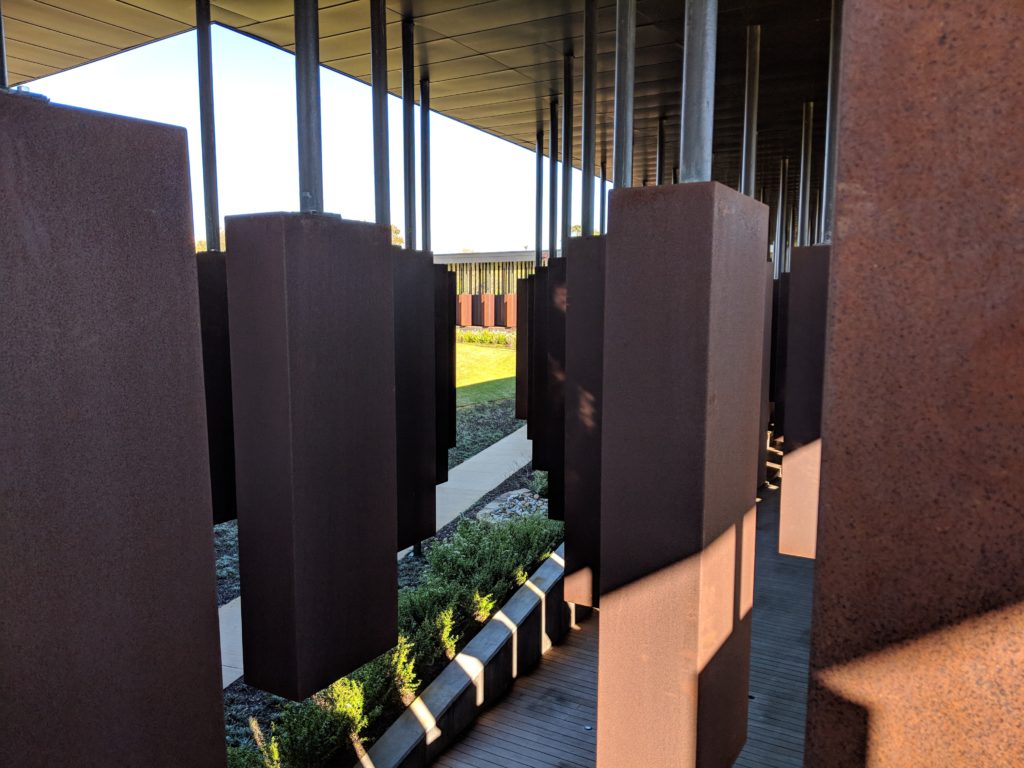There’s a lot to be said for the way we suppress the more painful parts of our history in this country. As Black History Month comes to a close, I have found myself reflecting on my trip last year to Montgomery, Alabama. I was there for work, but it gave me a unique opportunity to explore an important landmark of American History. I spent an afternoon touring the Legacy Museum and the National Memorial for Peace and Justice. I got to walk along the bus route where Rosa Parks was famously arrested for refusing to give up her seat. I even got the chance to hear the famed civil rights attorney Bryan Stevenson speak. It was a powerful couple of days, and it gave me a lot to process about the legacy of racism in this country.

Through a series of powerful exhibits, The Legacy Museum shows how the lineage of slavery connects to our present-day crisis of mass incarceration. It starts with the North Atlantic Slave Trade, focusing on how it grew in Montgomery and throughout the American South. It’s one thing to know the history, but the museum is designed to give it fresh details and context. The legacy of lynching that followed Reconstruction was a particular area that I knew very little about. The way that it was used to terrorize people of color, how prevalent it was well into the 1950s, and that it didn’t so much end as change faces following the Civil Rights movement in the 1960s. The present-day era of mass incarceration is just the latest manifestation of an evil that has been haunting us for centuries.

After the museum, we made our way to the National Memorial for Peace and Justice. Intentionally built on the highest point in Montgomery, the memorial is comprised of over 800 hanging metal pillars. Each of the pillars represents one of 800+ counties throughout the south where lynchings took place. On each beam, there are names and dates of the documented cases. Along the walls are countless horror stories of shattered families and a perversion of justice. One could easily spend the entire day there reading all of them. At the center of a monument is a large wall fountain, pillars hanging overhead, with text reading: “Thousands of African Americans are unknown victims of racial terror lynchings whose deaths cannot be documented, many whose names will never be known. They are all honored here.”

Outside the monument, an exact replica of each pillar inside is laid along the ground. The purpose is for each of the counties to claim its own pillar and display it publically. None of them have been taken yet, but more than half of the counties have started the process. I keep thinking about this with the context of white nationalists protesting the takedown of Confederate monuments. The very same people fly the Confederate flag while claiming it represents “heritage, not hate.” Slavery, lynching, and segregation are swept under the rug in the name of misplaced pride as though it is not also a part of that very same heritage being celebrated. Places like the Memorial for Peace and Justice, that hold space for these harsher truths, are important because they challenge us to dig deeper. We cannot move beyond a past that we refuse to acknowledge.

After the memorial, I took advantage of the unseasonably warm weather and walked back to the hotel. It ended up being along the bus route where Rosa Parks was arrested for refusing to give up her bus seat to a white person. A colleague recommended I check out Bryan Stevenson’s book, Just Mercy. After hearing him speak later that evening, I ordered a copy. I ended up listening to the audiobook last summer. If anyone noticed me crying while I was biking over the Williamsburg Bridge, that was the reason. I haven’t had a chance to watch the movie yet, but I plan to. I highly recommend the book to everyone, though. And for the white people reading this, I recommend following it up with White Fragility by Robin DiAngelo for a fresh understanding of our own complicity in perpetuating racism. It’s so much bigger and more entrenched than we realize.

Unpacking and detangling the legacy of racism is an ongoing, neverending process. The recent HBO adaptation of Watchmen opened with a realistic depiction of the 1921 Tulsa Race Massacre. The mini-series was well-received, and it shined a spotlight on a painful history that had remained deliberately buried for nearly a century. Just last week it was announced that it will finally become an official part of the Oklahoma school curriculum. The resistance to acknowledging these awful truths is real. It took the adaptation of a superhero comic book to break that story open. I think N. K. Jemisin put it best:

I wish Montgomery were easier to get to. This museum and memorial should be an essential part of every school curriculum in this country. As it stands, it’s only a two-hour drive from Atlanta, which is a major hub airport. That means if you ever have a layover there, you could make a day trip out of this. I can assure you that it’s well worth your time. To put it simply: we owe it to ourselves and our future to embrace and learn from the uglier moments of our history. That is the only way we will ever move forward.
0 Comments